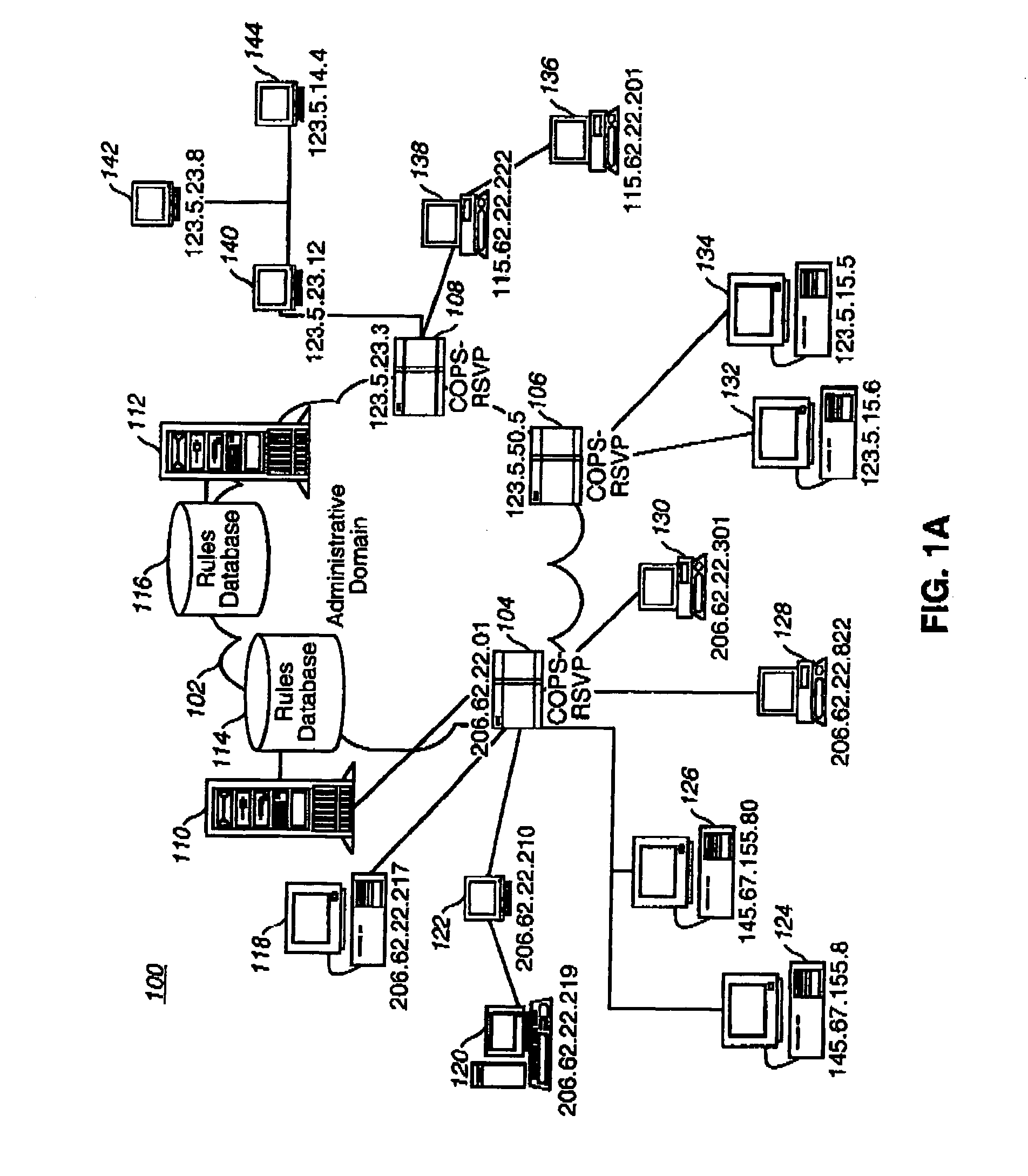Customer resources policy control for IP traffic delivery
- Summary
- Abstract
- Description
- Claims
- Application Information
AI Technical Summary
Benefits of technology
Problems solved by technology
Method used
Image
Examples
Embodiment Construction
[0036]Referring now to the drawings, wherein like reference numerals designate identical or corresponding parts throughout the several views, and more particularly to FIG. 1A thereof, an illustrative computer network 100 implementing the present invention is shown. The computer network 100 includes an administrative domain 102; policy enforcement points (PEPS) 104, 106, and 108; policy decision points (PDPs) 110 and 112; rules databases 114 and 116; and endpoints 118, 120, 122, 124, 126, 128, 130, 132, 134, 136, 138, 140, 142, and 144. For ease of reference, a glossary of terms and abbreviations is provided herewith as Appendix A.
[0037]The administrative domain 102 is a collection of network elements under the same administrative control and grouped together for administrative purposes. The administrative domain 102 uses permanent connections, such as cables, and / or temporary connection made through telephone, modem, or other communication links to permit communication between vario...
PUM
 Login to View More
Login to View More Abstract
Description
Claims
Application Information
 Login to View More
Login to View More - R&D
- Intellectual Property
- Life Sciences
- Materials
- Tech Scout
- Unparalleled Data Quality
- Higher Quality Content
- 60% Fewer Hallucinations
Browse by: Latest US Patents, China's latest patents, Technical Efficacy Thesaurus, Application Domain, Technology Topic, Popular Technical Reports.
© 2025 PatSnap. All rights reserved.Legal|Privacy policy|Modern Slavery Act Transparency Statement|Sitemap|About US| Contact US: help@patsnap.com



